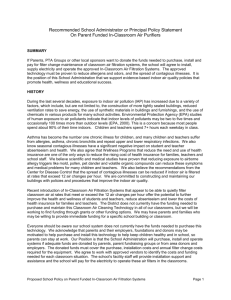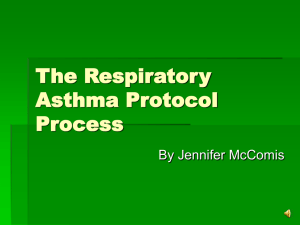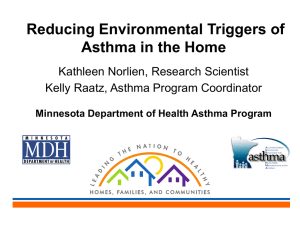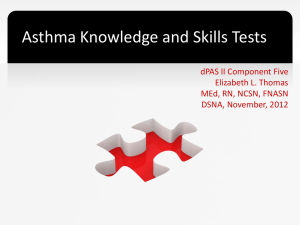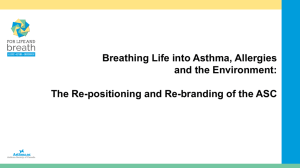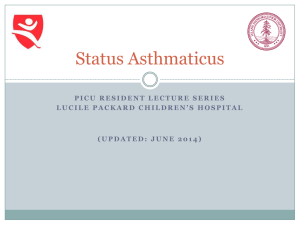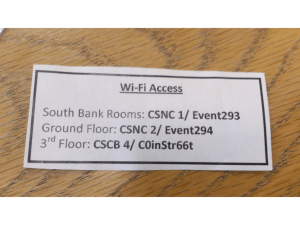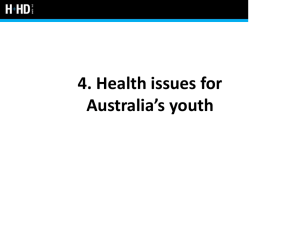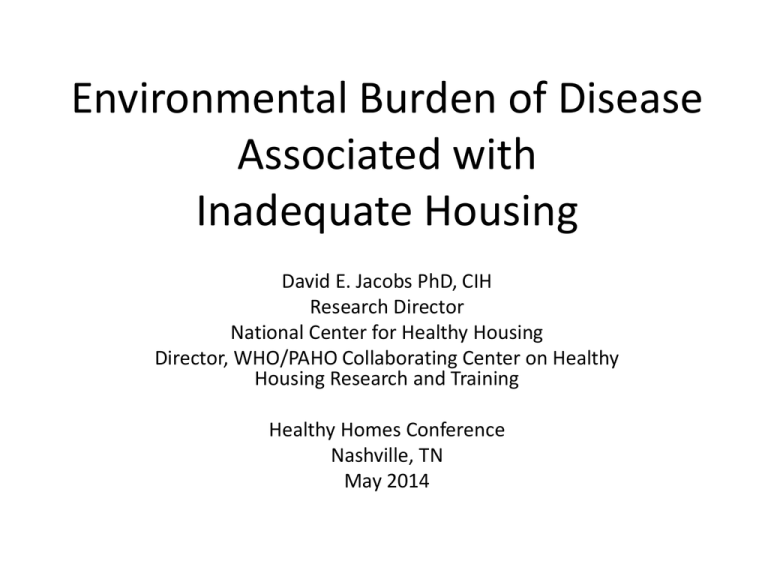
Environmental Burden of Disease
Associated with
Inadequate Housing
David E. Jacobs PhD, CIH
Research Director
National Center for Healthy Housing
Director, WHO/PAHO Collaborating Center on Healthy
Housing Research and Training
Healthy Homes Conference
Nashville, TN
May 2014
• Historical Overview
• Review of the Evidence
• Environmental Burden of Disease
Methodology
• Conclusion
Florence Nightingale
“The connection
between health and
the dwelling of the
population is one of
the most important
that exists.”
Cited in Lowry, S, BMJ, 1991, 303, 838840
Miasma & Housing-Related Disease
National Human Activity Pattern Survey
Sufficient Evidence (WHO, 2005)
►PHYSICAL FACTORS:
– Heat and cold - excess winter
& summer mortality
– Energy efficiency of housing
and respiratory health
– Radon exposure in dwellings
and lung cancer
– Neighborhood and building
noise and mental health
► SOCIAL FACTORS:
– Multifamily housing, high-rise
housing, housing quality and
mental health
► CHEMICAL FACTORS:
– ETS exposure in dwellings
and respiratory and allergic
effects
– Lead-related health effects
► BIOLOGIC FACTORS:
– Humidity and mold in
dwellings and respiratory
health effects
– Hygrothermal conditions
and house dust mite
exposure (asthma)
Some Evidence (WHO, 2005)
► PHYSICAL FACTORS:
– Ventilation in the dwelling and
respiratory and allergic effects
► CHEMICAL FACTORS:
– VOCs and respiratory,
cardiovascular and allergic effects
► BIOLOGICAL FACTORS:
– Cockroaches and rodents in
dwellings and respiratory and
allergic effects
– Cats, dogs and mites in dwellings
and respiratory and allergic effects
– Pets and mites and respiratory,
allergic or asthmatic effects
► BUILDING FACTORS:
– Sanitation and hygiene conditions
and related physical health effects
► SOCIAL FACTORS:
– Social conditions of housing and
fear/fear of crime
– Poverty and social exclusion and
related health effects
– Crowding and related health
effects
– Social factors/social climate and
mental health
Allergens & Asthma
• HUD National Survey of Lead and Allergens
• over 80% of homes in the U.S. have detectable
levels of house dust mite allergen in the bedroom
• 46% had levels associated with sensitization
• 24% had levels associated with asthma morbidity
• Allergens were most highly concentrated in lowincome housing
• (Arbes et al., 2003).
Integrated Pest Management
► Severe asthma reduced from
37% to 9% following IPM1
► Insecticides were lower in air
and absent in maternal blood2
►More effective against pests
than routine spraying3
Selected References
1 Sandel et al. Can IPM Impact Urban Children With Asthma?
2 Williams et al. An Intervention to Reduce Residential Insecticide Exposure
During Pregnancy Among An Inner City Cohort. EHP 114: 1684-1689
3 Miller & Meek 2004. Cost and Efficacy Comparison of IPM with Monthly Spray
Insecticide Applications J Econ Entymology 97 552-569
Multi-Faceted Asthma Interventions
(Education, Management, Coordinated Care,
Housing Structural Improvements)
► Symptom Days
► Medical Care (ER)
► Missed School
► Improved Quality of Life
Source: Crocker et al. 2009. Home-Based Environmental
Interventions to Reduce Asthma Morbidity. CDC Task
Force on Community Services
► Asthma-$18.3 billion
a year
– $10.1 billion in direct
medical costs
– $8.2 billion in lost
work/school
Source: asthma and allergy foundation
http://www.aafa.org/display.cfm?id=6&sub=63
Injuries
Place
Total Injury Visits/yr
Home
4,010,000
School
811,000
Public
2,210,000
Other
841,000
Unknown
2,341,000
Source: Phalen et al. 2005. Residential
Injuries in US Children and Adolescents. Pub
Health Reports 120: 63-70
Indoor air pollution: Asthma
Baltimore
Baltimore Indoor Environmental Study of Asthma in Kids
• 150 preschool children with asthma
• Indoor air sampling in child’s
bedroom over 3 days:
• NO2
• PM10, PM2.5
• Outcomes:
– Symptoms in the past 2 weeks
– Rescue medication use in past 2 weeks
Breysee et al 2014
Indoor NO2 Exposure and Asthma
Symptom
RR per 20 ppb increase
in NO2
Limited speech
Coughing without a cold
Nocturnal symptoms
Symptoms while running
Slowing activity
Daytime wheezing, coughing
or chest tightness
Adjusted for age, sex, race, mother’s education level, PM2.5, SHS, season; *p-value<0.05
1.15*
1.10*
1.09*
1.07
1.06
1.03
Hansel 2008
Intervention: Target NO2
Breysee et al. 2014
Randomized trial to evaluate the effectiveness and feasibility of
interventions aimed at reducing indoor NO2 concentrations in
Baltimore City homes
Unvented gas stove
Stove
replacement
Air purifier
Ventilation hood
installation
• Replacing gas stoves with electric stoves or
placement of air purifiers with HEPA and
carbon filters can decrease indoor NO2
concentrations up to 51%
• Ventilation hood installation over stove did
not significantly change indoor NO2
concentrations over 3 months of follow up
• Indoor NO2 exposure associated with worse outcomes
in asthma and COPD
– Even at relatively low pollutant burden
• Clinical guidelines recommend avoidance of indoor air
pollution
• Indoor NO2 concentrations
– Reduced by HEPA Air purifier with carbon filter
– Reduced by replacing gas stove with electric stove
• Indoor PM concentrations
– Reduced by HEPA Air purifier
WHO EBD Report 2011
Example of EBD Calculation - 1
Example of EBD Calculation - 2
EBD- 1
EBD - 2
EBD - 3
Environmental Burden of Disease
from Inadequate Housing
•
•
•
•
•
Feasible to Quantify
Not Completed for US (yet)
Huge
Interventions Exist
International Conventions are in place
New Paint Lead Levels
Country
China
Median Paint Maximum
Lead (ppm)
Paint Lead
(ppm)
3,280
73,400
India
16,720
187,200
Malaysia
21,300
143,000
9
3,500
Singapore
• Calling for a Global Ban on Lead Use in
Residential Indoor and Outdoor Paints,
Children’s Products, and All Nonessential
Uses in Consumer Products
• Policy Date: 11/5/2007
Policy Number: LB-07-01
Global Alliance to End Lead Paint
WHO/United Nations
Environment Program
“Until effective standards for the
domestic environment are devised, it
is likely that children will continue to
be employed as biological indicators
of substandard housing.”
Donald Barltrop, 1974
Contact Information
David Jacobs, PhD, CIH
Research Director
National Center for Healthy Housing
Washington DC
Director, WHO/PAHO Collaborating Center on
Healthy Housing Research and Training
djacobs @nchh.org
www.nchh.org


